Domestic disposable grenade launchers
A reactive anti-tank grenade with a disposable starting device instead of the anti-tank hand grenade RKG-3 got into development in the Soviet Union in 1967 year. There is an assumption that the beginning of the development was due to the fact that the Soviet military acquainted with the American system of a similar type M72 LAW, which was actively used by the Americans during the Vietnamese war. At the very least, the layout and basic design decisions of this weapons, which entered service with the Soviet troops in the 1972 year, indicated that it was analogous to M72 LAW. During the development of the RPG-18 received the code name "Fly" and was made before the beginning of the 90-s. At this point in time, "Fly" is recognized as an obsolete model. Therefore, it was replaced by newer and more effective models.
The RPG-18 anti-tank rocket grenade is a missile with a cumulative warhead of 64 caliber of a millimeter and a rocket powder engine. The grenade trajectory is stabilized with the help of folding stabilizers, as well as axial rotation, which these stabilizers provide. The grenade crashes at an initial speed of about 115 meters per second. The trigger is a telescopic structure consisting of an inner aluminum tube. It is fitted with nozzles pushed forward and thus protecting the arrow from engine exhaust during its operation. On the sides of the starter are hinged covers. In order to bring the weapon into the combat position, you need to pull out the safety catch and push the launch canister into the combat position. At the same time, the end flaps open automatically. Starting ammunition is carried out by pressing the trigger. Since it is impossible to return the grenade launcher to the original position, it should be shot out after the platoon: either towards the enemy, or in the safest direction. During a shot at the shooter, a danger zone is formed with a depth of up to 30 meters.
Based on the RPG-18, an RPG-22 anti-tank rocket grenade was developed. The development was carried out at the end of 70-ies, during which the weapon was given the code name "Net". “Netto” was adopted in 1980 year, and production was carried out until 1993 year. RPG-22 surpasses its predecessor in armor penetration and direct shot due to a more powerful rocket engine and increased initial speed. It differs in smaller dimensions.
RPG-22 is a rocket projectile with a warhead of the cumulative action of a millimeter caliber 72,5 and a rocket powder engine. The main technical characteristics are identical to the RPG-18. The initial grenade launch speed is approximately 130 meters per second. Also, the accuracy of shooting is increased - it is 0,4 m. In addition, a change in the firing mechanism allowed the trigger to be re-cocked in the event of a misfire. Return when firing from this gun is missing. This is achieved due to the fact that the powder gases out through the open barrel back. A grenade is fired using a jet engine. His powder fuse burns completely, while the grenade moves along the barrel.
In parallel with the adoption of the RPG-22 in 1980, the development of another type of disposable grenade launcher began - the RPG-26. In the course of his work, he was given the code name "Aglene." The main task of developing new weapons was to simplify the return of the grenade to the marching position from the combat one and to increase the level of hitting targets. Soviet troops adopted it in 1985 year. Over time, the RPG-26 completely supplanted outdated RPG-18 and RPG-22 grenade launchers.
To date, this type of weapon has been manufactured and is in service with the Russian armed forces as an individual means of fighting an infantryman against armored vehicles and light fortifications.
The RPG-26 anti-tank rocket grenade is a rocket projectile with a warhead of the cumulative action of a millimeter 72,5 caliber and a rocket powder engine. The grenade trajectory is stabilized due to folding stabilizers and axial rotation. The starting device is made in the form of a fiberglass monoblock pipe. When departing from a launch device, the grenade has a speed of approximately 145 meters per second. The starting device at the ends is closed with rubber caps, collapsing during the shot.
To bring the weapon into a fighting position, you only need to pull out the safety check. In this case, the trigger mechanism is cocked, and the launch of the ammunition is carried out by pressing the trigger lever.
In order to transfer the grenade from the combat position to the initial position, it is necessary to remove the trigger mechanism from the combat platoon by lowering the rear sight horizontally and fixing it with a check.
In the mid-80s, the development of an anti-tank RPG-27 anti-tank grenade was also carried out, which was called the Meadowsweet. The main objective of the development was to ensure the effective defeat of modern tankswho had dynamic protection and enhanced armor. To do this, in the design of weapons used warheads from the PG-7VR grenade launcher RPG-7V. It was adopted by the Soviet armed forces as an addition to the more compact and light, but at the same time less effective RPG-26. RPG-27 anti-tank rocket-propelled grenades are still in service with the Russian troops and are also produced for export. The grenade is propelled by a jet engine.
The RPG-27 launcher is almost the same as the RPN-26 and is a fiberglass tube. Similarly, sights and trigger mechanism. Near the rear slice there is a folding stop for lying down. During the shooting, it is installed on the ground. This allows the barrel to be kept at such a distance from the surface that the grenades do not touch it when it leaves. In order to increase the punching action of the grenade, a tandem type was made: the main part has a caliber of 105 millimeters, and the front part is 64 of a millimeter. The front part is triggered when interacting with the dynamic protection of the tank, destroying it and giving a signal to the main warhead. The mass of the grenade launcher is 7,5 kilogram, the initial speed of the grenade at departure is 130 meters per second, the range of a shot at a height of 2 meter is approximately 150 meters.
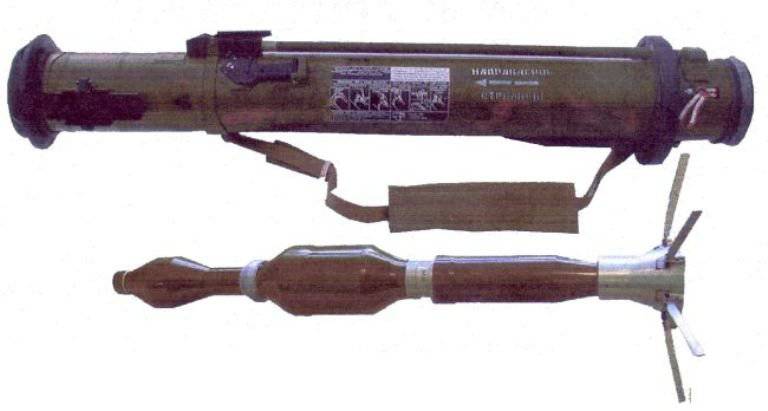
Based on the RPG-27 anti-tank rocket grenade, the RSHG-1 assault rocket grenade was developed. The main difference between them is the thermobaric warhead RSHG-1, which is used to combat the fortifications and infantry of the enemy, as well as lightly armored equipment. The method of influencing the target RSHG-1 is very similar to the RPO-A infantry rocket flamethrower, but through a different classification comes the usual infantry weapons, rather than chemical troops. It has been in service with Russian troops since 2000, and is also produced for export.
RSHG-1 is a rocket projectile with a thermobaric action warhead of 105 caliber of millimeters and a rocket powder engine. The warhead contains about 1,9 kilograms of the fuel mixture. When undermining gives a high-explosive effect, which can be compared with the undermining 6 kilogram of TNT. The trajectory of the grenade is leveled due to folding stabilizers and axial rotation, which they pass to the grenade. The initial speed of the grenade at departure is approximately 120 meters per second. The starting device at the ends is closed with rubber caps, collapsing when fired. The transfer of a grenade from the combat position to the original is similar to the RPG-27.
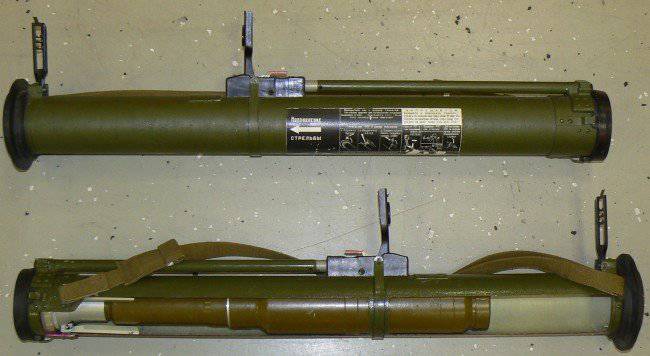
At the same time, the RSHG-2 was being developed, and in 2000, it was put into service by the Russian armed forces. The RSHG-2 assault grenade was developed based on the RPG-26. The difference between them is only in the use of thermobaric warhead in RSHG-2.
The RSHG-2 assault grenade is a missile with a warhead of thermobaric action of millimeter 72,5 caliber and a rocket powder engine. The warhead contains about 1,16 kilograms of the fuel mixture, the detonation of which is equivalent to undermining 3 kilograms of TNT. The warhead has at the same time a high cumulative, high-explosive, fragmentation and incendiary action. The design of RShG-2 has no analogues in the world.
A characteristic feature of the grenade is its ability to infect the enemy's manpower in buildings, even if it is in armor, and even in the case of indirect grenade penetration into the embrasure. RSHG-2 is capable of piercing concrete walls up to 300 millimeters and brick walls up to 500 millimeters.
Universal modules that were used in the design, made it possible to significantly reduce the cost of development and introduction into mass production. It is also important to note that mastering the process of combat use of grenades is easy. Experts are sure that according to the “price-effectiveness” principle this type of weapon has no analogues in the world.
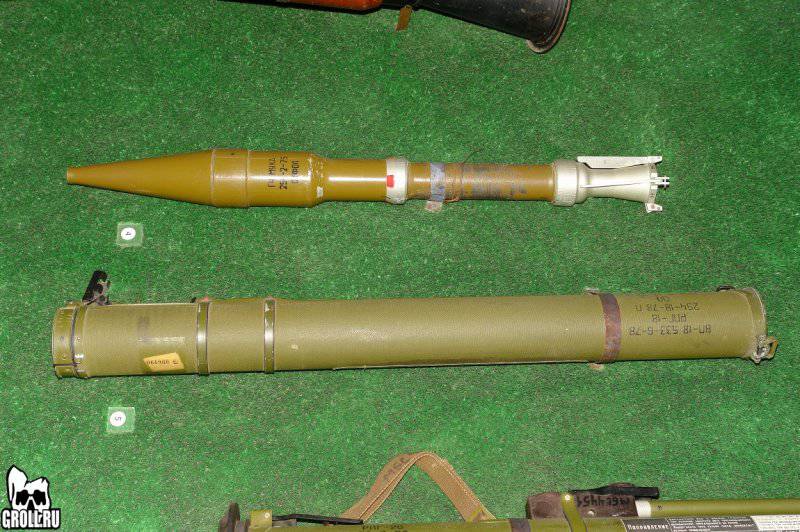
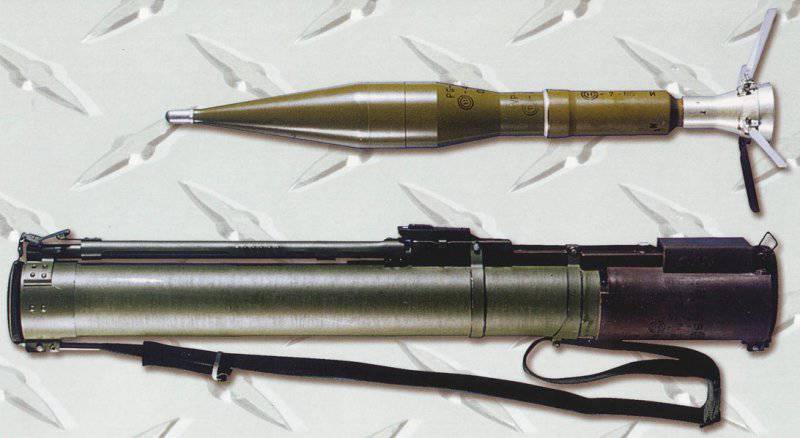
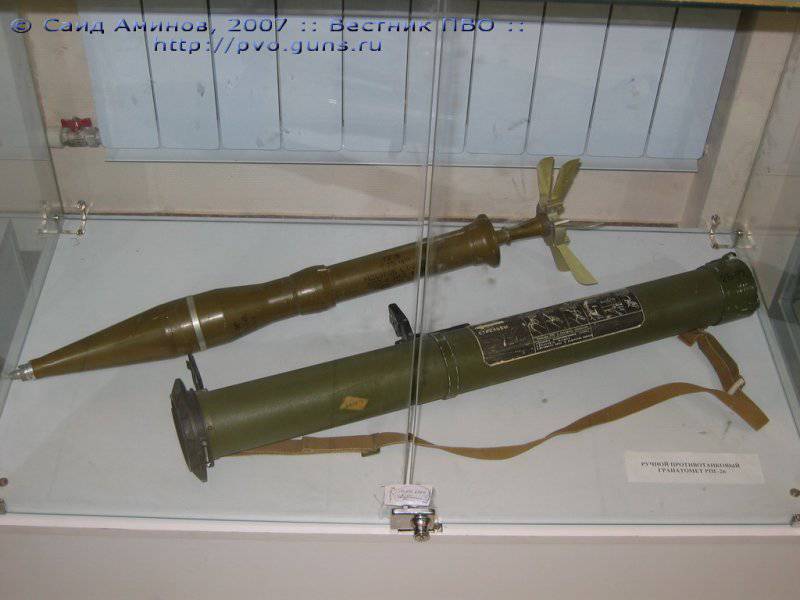
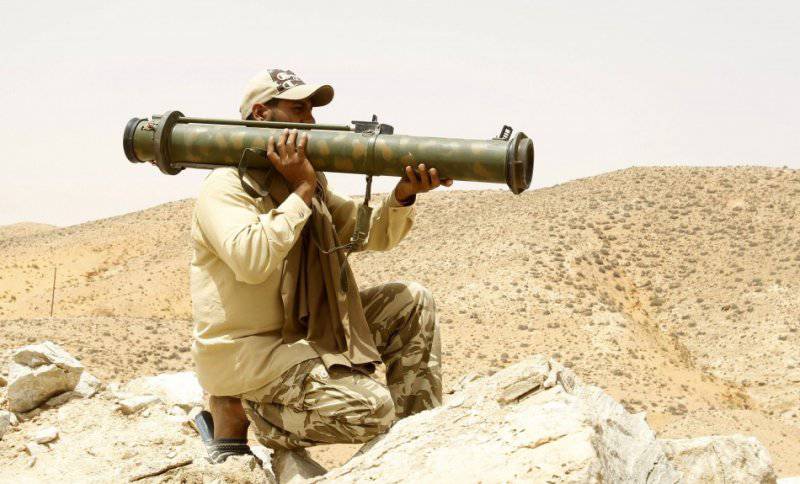
Information